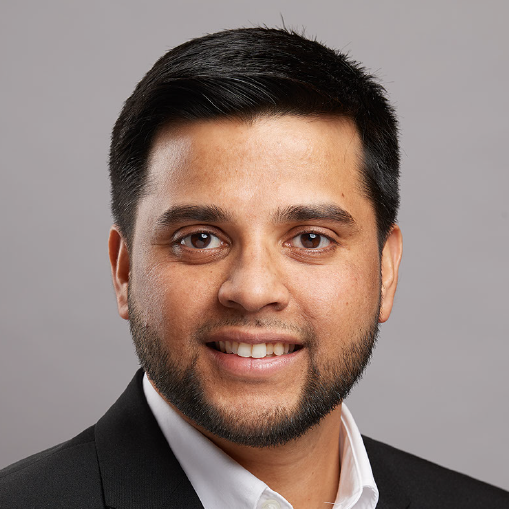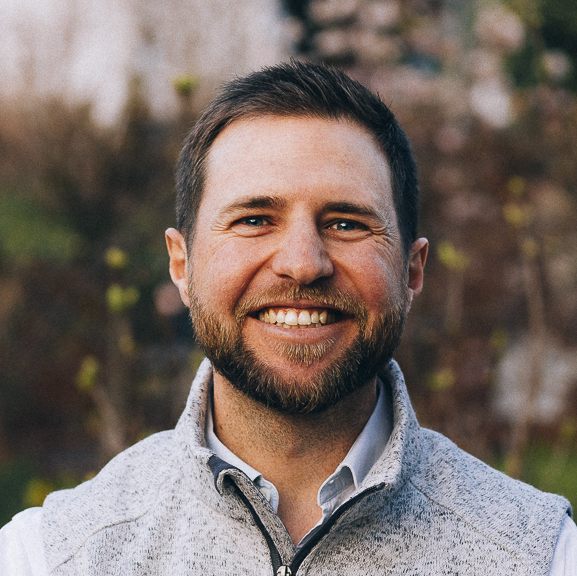The quest for the Holy Grail in AAV chromatography: empty–full separation
Cell & Gene Therapy Insights 2022; 8(4), 561–567
DOI: 10.18609/cgti.2022.085
Ratish Krishnan and Oliver Rammo share their thoughts on the need for a more nuanced understanding of AAV capture and empty–full separation, and the trends driving innovation in this area.
Listen to the podcast here or read the the interview below.
If you enjoyed this episode, you can listen to all episodes from The BioInsights Podcast wherever you normally get your podcasts.
Follow the Podcast to make sure you don't miss the next episode.
What are the challenges in AAV empty–full separation?
OR: From a market perspective, there is not just one serotype, one cell type, or one empty–full capsid ratio. These all vary largely between cell lines, with the ratio falling anywhere between 10 and 90%. This generates a lot of complexity, so it is difficult to have a one-fits-all approach.
Most AAV serotypes are the same size and only differ slightly in density and isoelectric changes. Even though these variations are very small, there is a range of analytical methods, such as ultracentrifugation and capillary electrophoresis, which enable high-resolution separation of the species. However, there are limitations in scale, throughput, and cost.
Alternatively, anion exchange chromatography has been widely explored for this application, due to its scalability, high throughput, and low need for sample preparation. When using anion exchange chromatography, the devil is in the details. With current methods, you can either achieve a good separation efficiency between full and empty capsids at low process yields, or a higher overall process yield with low separation efficiency. Even with preexisting process knowledge, time-consuming process development work is needed to finetune parameters such as salts and process additives.
A further complication is that AAV can show aggregation under certain process conditions; for example, AAV2 is more hydrophobic than other serotypes.
RK: The therapeutic role of empty capsids, or even partially full capsids that are formed during AAV packaging, is not fully understood. The general understanding is that empty capsids provide no therapeutic benefit. However, they may increase the innate or adaptive immune response in gene therapy patients.
Cesium chloride and iodixanol-based ultracentrifugation are commonly used in academia and for small-scale preps and first-generation processes. However, in larger-scale manufacturing, a chromatography approach using anion exchange is more desirable due to its scalability.
How well understood is empty–full capsid separation in the gene therapy industry? What are some of the misconceptions?
RK: The short answer is that it is not very well understood. The need to remove empty capsids is understood at a high level – they do not contain the gene of interest, so they are considered an impurity. The exact percent of full AAV capsids needed is vague. The acceptable level is based on clinical experience, and there is a debate as to whether they are a process-related impurity or if they have a biological function during treatment. It has also been suggested that empty capsids can act as decoys to reduce neutralizing antibody burden. We need to further understand the immune response to empty capsids.
Our customer interactions over the last few years have led to discussions for process development groups involving a wide range of targets for percent full capsids. Some aim close to 100%, with others aiming considerably lower. Some customers are hoping for the FDA to set the limits, but a regulatory body would have difficulty setting a limit without understanding the clinical impact of these empty capsids. The overall goal is to maintain a consistent number of full capsids across the clinical phases of your program, with an emphasis on robust preclinical and clinical trial designs to understand the tolerability of varying levels of purity in patients.
OR: Some customers believe that we need 100% full samples of AAV. This concern arose in 2020 when issues with high dosing with AAV were reported, including progression to liver dysfunction. This raised some fundamental safety concerns for the use of AAV vectors. It has become critical to have future tools that enable the study of individual serotypes to ensure the safety and future of drug development and administration of AAV.
Olli, how is Merck tackling the AAV capture and empty–full separation challenge?
OR: From a capture perspective, we currently have ongoing development programs that enable the purification of specific serotypes. We are looking at a universal approach from an academic point of view. The universal approach offers greater process flexibility and a one-for-all solution. While the approaches for single serotype affinity purification tend to enable better process economics, higher yield, and higher impurity reduction, they are only applicable for one specific serotype.
Our development program during an EU-funded project called DiViNe for Nanofitins® in collaboration with Affilogic is based on this approach. These Nanofitins are small affinity ligands, discovered in organisms that live in America’s Yellowstone National Park geysers. As these organisms are suited to living under extreme conditions, the resultant stability of the Nanofitins rendered them very attractive for therapeutic applications. We optimized the scaffolds for chromatographic purposes.
From an empty–full separation perspective, we are exploring both resins and membranes. This includes small resin particles based on anion exchange chemistry, such as our Fractogel® resin family. These resins hold promise when applied to a hybrid gradient in finding the balance between process yield and separation efficiency for full and empty capsids. We have plans to further optimize these processes through additional collaborations, including looking into a multi-column approach.
We are also working on membrane absorbers in collaboration with a group at the University of Mannheim. This group holds great experience in process modeling originating in the monoclonal antibody market, which we want to transfer to AAV processes.
RK: In terms of other partnerships, our teams – including the process development services across the globe, manufacturing science and technology, and customer application teams – are all heavily engaging with our customers in solving this issue. We are focusing on a two-pronged approach – developing new products and generating data on existing products.
How can analytics drive innovation in this area?
OR: Having the right analytical tools is essential to match the pace and speed of current innovation of AAV therapies. To advance product development and keep up with the speed of manufacturing, we need to have novel process analytics that combine high resolution and high throughput. This is currently not available in the market, and end-users need to combine multiple analytical methods to achieve good impurity profiling or empty–full ratio determination. There is a need for innovation for an all-in-one method that gives information for all relevant parameters, such as capsid titer, empty–full ratio, and aggregation level.
The novel methods that hold promise for this include size exclusion chromatography multi-angle light scattering. However, this will require upfront investment and consideration of user experience. We are partnering in the NIIMBL project that started last year, supporting the development of a microfluidic chip. This innovative concept enables the determination of full–empty capsids on a single, portable device in a simple format.
RK: As a downstream scientist, I fully agree that there is no process without analytics. Innovation in analytics is critical to finding the root cause of this process issue.
Looking to the future, how do you expect to see technology for AAV capture and empty–full separation evolve over the next 5 years?
RK: As an optimist, I am confident we will be very close to solving this challenge. Empty–full separation is not always an isolated downstream issue, so tackling the production of more full capsids upstream inside the bioreactor is a commonly available solution.
Improvements in HEK production systems are expected. The use of baculovirus expression systems could also be a valid answer, where percent full capsids are generally higher at the end of harvest. However, there are other considerations to this approach. Even though insect cells may give higher percent full titers, there is a need to deal with higher levels of feed impurities that then shift the bottleneck back to the downstream route. The size of the payload or gene of interest that is used might also affect the separation efficiency.
From a downstream lens, innovative products and creative processes, such as hybrid salt and pH gradient elution on anion exchange chromatography resins, have been attempted with varying degrees of success.
I also hope there will be more transparency in the data that is made available. There is so much work happening on empty–full separation in process development labs across the globe, but we hear very little about it.
How will future trends in AAV capsid design and production affect purification?
RK: Historically, we have used AAV serotypes 1 through 10. We are now seeing the era of hybrid serotypes emerging through novel capsid design, artificial intelligence, and machine learning, which are customized to target organs of interest with higher transduction efficiencies than currently available serotypes. For example, novel serotypes such as AAV-DJ, AAV-DJ/8, rh10, and AAV-PHP, are shown to target the central nervous system well.
The purification focus though will stay constant, so we need to be consistently delivering a product that meets the release criteria guiding patient safety. Moving to templated chromatography processes is desirable, though this will likely be via a case-by-case approach depending on the complexity of fine separation with these new serotypes.
OR: To add, we need to have orthogonal tools. We see a lot of invention in this field with respect toward novel serotype development, but it remains challenging to predict future targets for large affinity development projects. Therefore, we need to consider a more universal approach. We also recently saw some great results with an orthogonal tool for plasmid affinity.
Biographies
Ratish Krishnan, Senior Strategy Consultant, Novel Modalities, Merck
Ratish Krishnan is a Senior Strategy Consultant in the Novel Modalities BioProcessing group for the Americas. A Process Development Scientist by background, he has over 13 years of experience in vaccines, monoclonal antibodies, and viral vector modalities from pre-clinical to late-stage process characterization, validation, and commercialization activities such as BLA authoring. Before joining Merck, Ratish managed process development teams at Novartis and Pfizer. Now, he serves as a global subject matter expert for viral vector manufacturing and provides strategic guidance to internal stakeholders and key customers. He holds a master’s degree in biotechnology from Pennsylvania State University.
Oliver Rammo, Director, Chromatography R&D, Novel Modalities, Merck
Oliver Rammo is leading the Novel Modality segment in the Purification R&D Group responsible for the development of novel purification strategies for the Viral and Gene Therapy market. Prior to his current role, he worked as Laboratory Manager and Application Engineer for the Merck Life Science division. He joined Merck KGaA in 2012, working for Performance Materials Advanced Technologies in the field of printing formulations for photovoltaic applications. Oliver holds a BSc in Applied Life Science from the University of Kaiserslautern and an MSc in Molecular Biotechnology from the University of Frankfurt.
Authorship & Conflict of Interest
Contributions: All named authors take responsibility for the integrity of the work as a whole, and have given their approval for this version to be published.
Acknowledgements: None.
Disclosure and potential conflicts of interest: The authors declare that they have no conflicts of interest.
Funding declaration: The authors received no financial support for the research, authorship and/or publication of this article.
Article & copyright information
Copyright: Published by Cell and Gene Therapy Insights under Creative Commons License Deed CC BY NC ND 4.0 which allows anyone to copy, distribute, and transmit the article provided it is properly attributed in the manner specified below. No commercial use without permission.
Attribution: Copyright © 2022 Merck. Published by Cell and Gene Therapy Insights under Creative Commons License Deed CC BY NC ND 4.0.
Article source: This is a transcript of a recorded podcast.
Interview conducted: Apr 12 2022; Publication date: May 25 2022.



